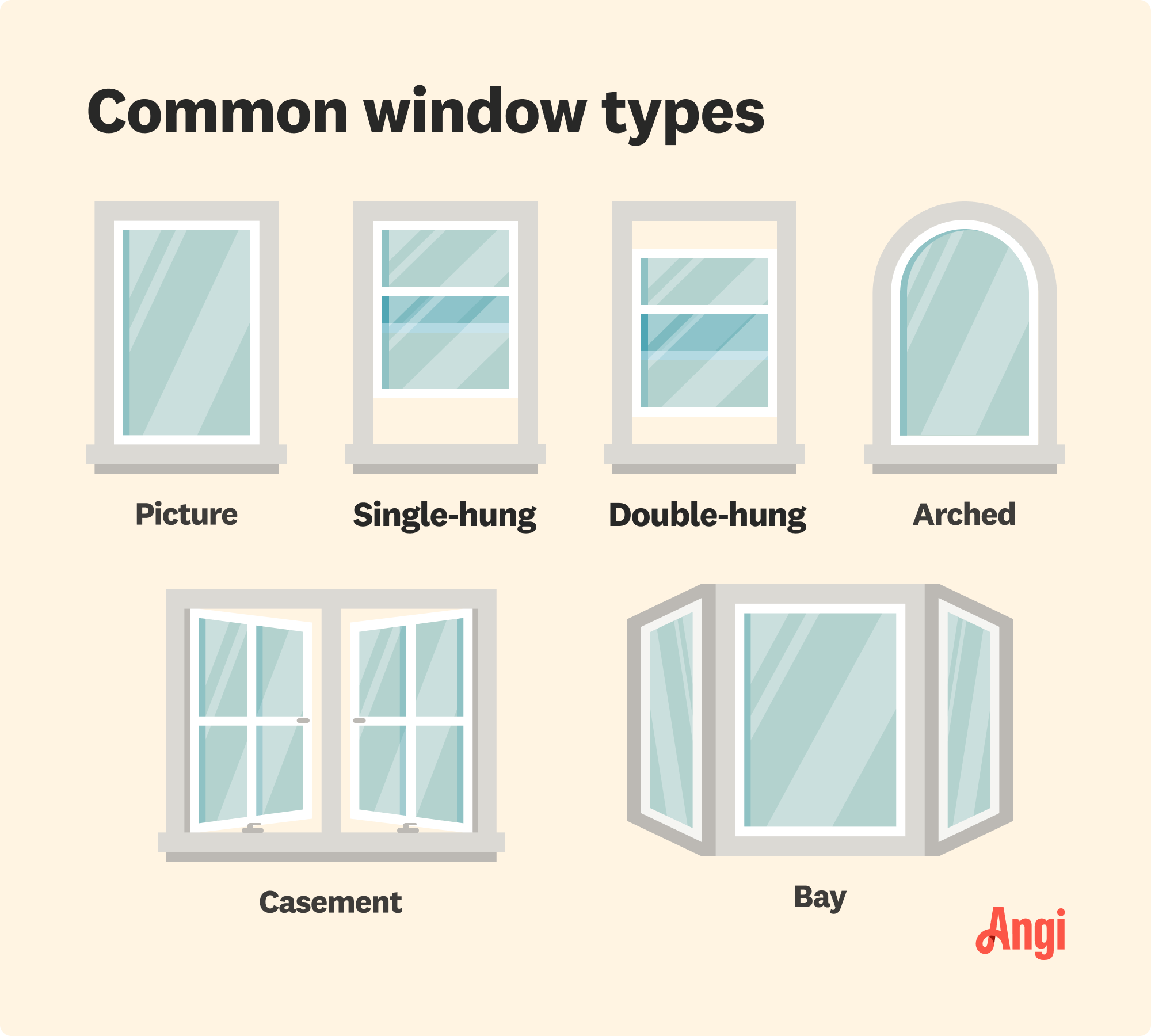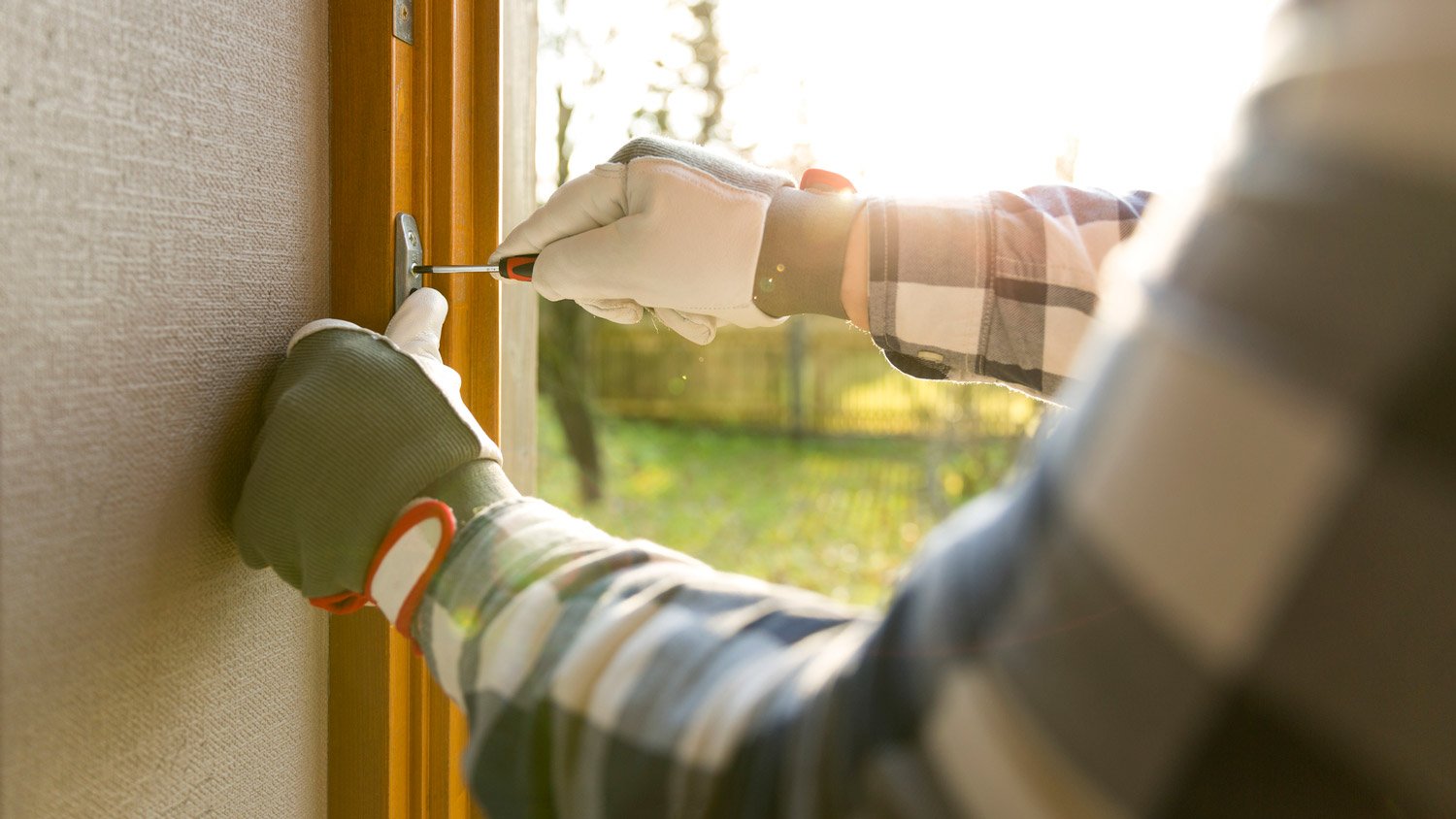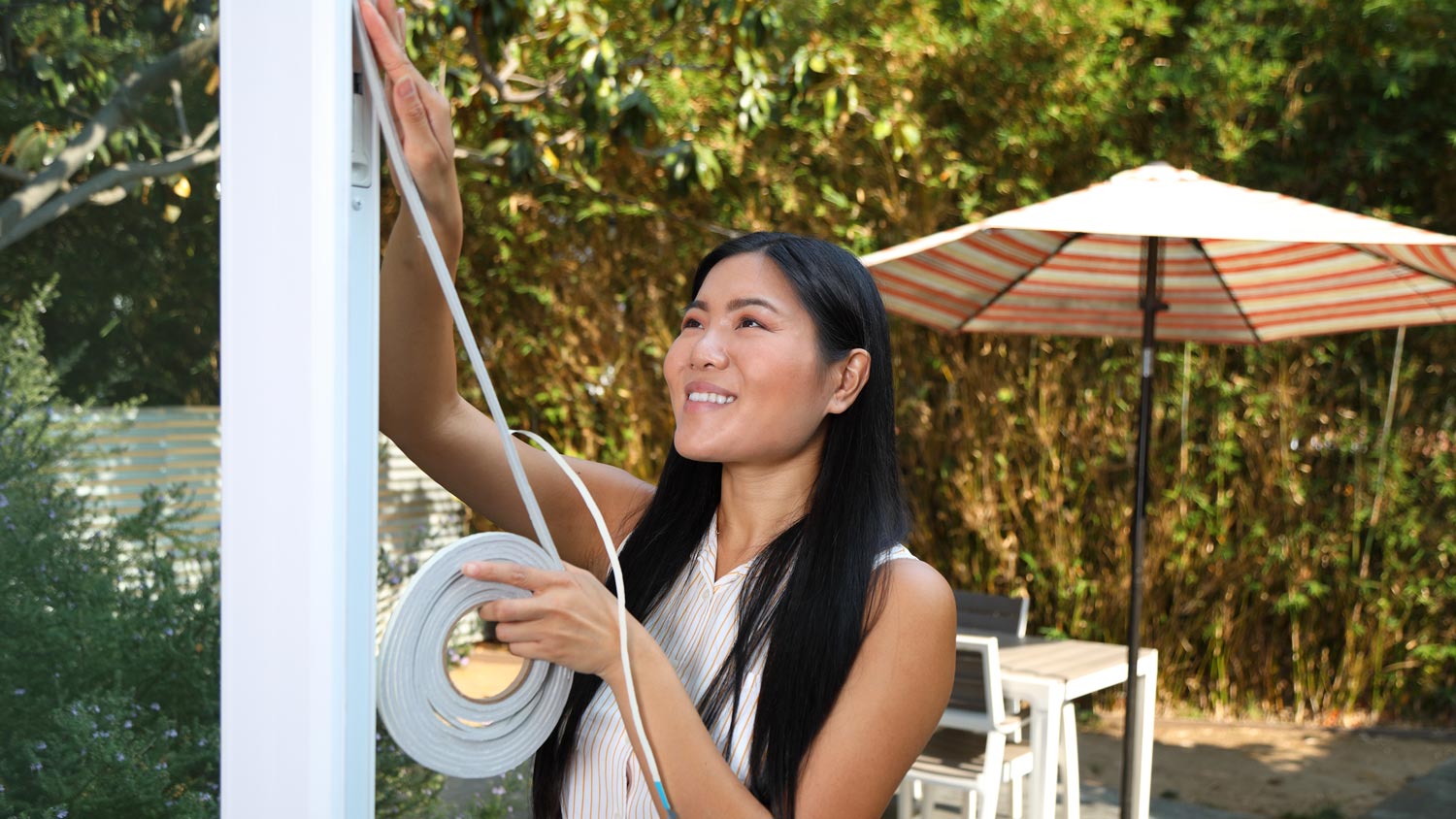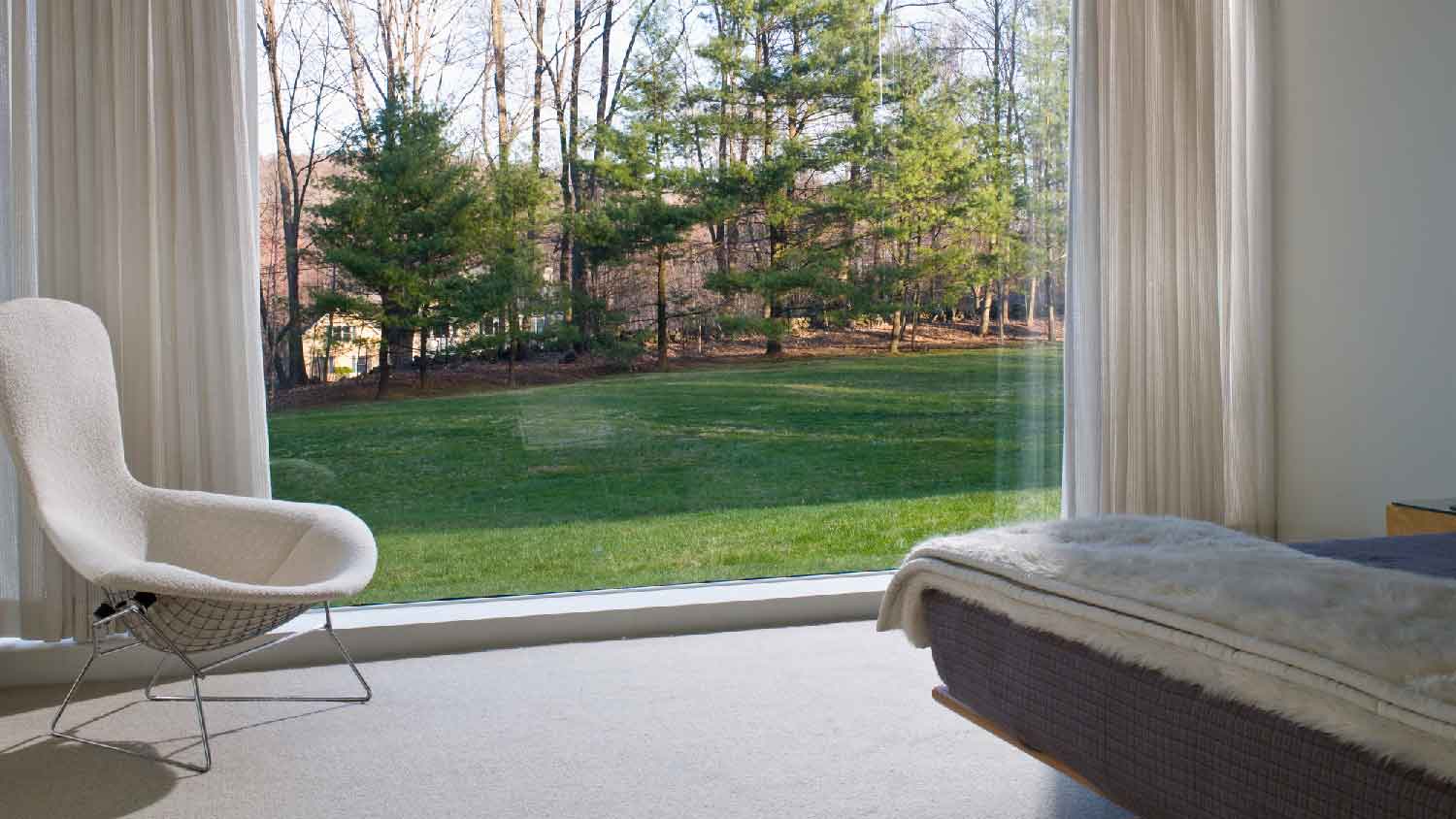
A new arched window can boost curb appeal, home value, and energy efficiency. Learn how much arched windows cost and what factors to consider.
Window service costs depend on your project and location. Check with a local pro for your specific job.
The average window replacement cost is $7,357, though most homeowners pay between $3,442 and $11,839.
Costs often break down to about $750 per window, with a range of $300 to $2,500 per window.
Labor rates might range from $100 to $300 per window—though complex installations can be $600 or more per window.
Other factors affecting the window replacement cost include frame material, style, glass type, and more.
The average window replacement cost is $7,357 per project. Most people pay between $3,442 and $11,839 in total, depending on window size, type of material, number of windows, number of panes, brand, and the cost of labor. You can expect to spend between $300 to $2,500 per window, including labor and materials.
Installing new windows is a great way to renew your home and keep it well-insulated. Plus, it can help save money on your energy bills. Here’s everything you need to know about window replacement costs so you can budget for the right materials and labor.
On average, window replacement costs $750 per window—and most homes have around 10 windows. Speaking with a local window contractor is the best way to accurately estimate your cost, especially if you have multiple windows to replace. For example, the cost to replace 25 windows can range from $18,000 to $20,000, while the average cost to replace windows in a 3-bed house is closer to $6,000 to $12,000.
Here’s a breakdown of estimated replacement costs based on number of windows:
| Number of Windows | Price Range |
|---|---|
| 6–8 | $4,500–$6,000 |
| 8–12 | $6,000–$9,000 |
| 12–16 | $9,000–$12,000 |
| 16–20 | $12,000–$15,000 |
| 20–24 | $15,000–$18,000 |
| 25 | $18,000–$20,000 |
The material you choose is a major factor in calculating the cost of a new window. Popular choices include vinyl, wood, fiberglass, aluminum, and composite. Custom, lavish, new construction, or extra-large projects can add between 25% and 50% to the total project cost.
Here’s a breakdown of estimated window replacement costs based on frame material:
| Material | Average Cost per Window | What to Know |
|---|---|---|
| Aluminum | $75–$400 | Not as energy-efficient |
| Vinyl | $100–$900 | Low-maintenance and durable |
| Composite | $300–$1,200 | Extremely durable and long-lasting |
| Wood | $150–$1,300 | Susceptible to mold and rot |
| Fiberglass | $500–$1,500 | The longest-lasting option |

The size and style of your window can greatly impact the cost of your window installation. Consult a window contractor near you to discuss the best options for your home.
Here’s a breakdown of the different window styles and their average price ranges:
| Window Type | Average Cost, per Window | Qualities |
|---|---|---|
| Arched | $350–$1,000 | Boasts unique designs and increased natural light. |
| Awning | $400–$950 | Excellent ventilation and often more secure than other window types. |
| Bay | $900–$7,100 | Improve curb appeal and provide expanded living space. |
| Bow | $1,500–$6,500 | Can provide visual interest and enhance views of the outdoors. |
| Casement | $150–$1,000 | Provides excellent water resistance and many customization options. |
| Custom | $1,000+ | Perfect for non-standard window sizes or shapes. |
| Double-hung | $150–$650 | Easily cleaned but can have complex installation issues. |
| Egress | $100–$700 | Easy operation and clear opening for safe exit. |
| Energy-efficient | $120–$1,500 | Can help to reduce energy costs and overall home drafts. |
| Floor-to-ceiling | $700–$5,000 | Modern design with abundant natural light but might pose privacy concerns. |
| Folding | $500–$900 | Blend indoor and outdoor spaces with modern designs. |
| Hopper | $150–$650 | Compact design that is easily maintained. |
| Jalousie | $170–$380 | Slats allow for maximum ventilation and natural light control. |
| $100–$400 | Minimalist design and flexible ventilation, but needs routine maintenance. | |
| Picture | $65–$700 | Offer no ventilation but do offer abundant natural light. |
| Single-hung | $100–$400 | Easy operation and timeless design, however, provide limited ventilation. |
| Skylight | $900–$2,500 | Provide unique architectural elements to the home, but may be more difficult to clean. |
| Storm | $90–$400 | Helps to significantly reduce drafts and noise while protecting from the elements. |
Not all window glass is created equal, and because of that, the glass type you choose for your new windows will impact the total cost. Different glass types can provide various levels of thermal and sound insulation but may require more maintenance.
Here’s how type of glass affects your window replacement cost:
| Type of Glass | Average Cost, Per Window | Qualities |
|---|---|---|
| Single-pane glass | $200–$500 | Most cost-effective option and easy to maintain, however, offers poor insulation. |
| Double-pane glass | $500–$2,000 | Helps maintain consistent indoor temperature and is durable, but is more expensive. |
| Triple-pane glass | $1,000–$4,000 | Best choice for insulation and enhanced home comfort, however, is the most expensive option. |
| Tempered glass | $200–$700 | Increased strength compared to other glass but offers limited customization options. |
| Low-emissivity (Low-E) glass | $300–$1,100 | Best energy efficiency option but has the potential for reduced natural light. |

If you pay a pro to install your new windows, you'll need to pay labor costs. These costs usually range from $100 to $300 per window, depending on the window's size, type, and location. However, more complex installations can cost as much as $600 or more per window.
In Florida and other coastal states that require hurricane impact windows, replacement costs can start at $1,200-$1,500 per window for the simplest single-hung window and go up from there for larger windows and/or architectural shaped impact windows. These costs include the required permitting.
You’ll also encounter a handful of additional factors that could influence the final cost of your window replacement, like the number of panes, type of glass, energy efficiency, window location, home age, and more. Check out these additional cost factors before you press enter on your calculator.
You can invest in add-ons to make your windows more energy-efficient. Energy-efficient windows cost between $50 and $1,650 per window, depending on your chosen upgrades.
While these window upgrades come with higher up-front costs, they can also save you between 7% and 15% in annual energy costs. Plus, by upgrading your home’s insulation, you may qualify for tax credits under the Inflation Reduction Act.
Here’s a breakdown of estimated costs for energy-efficient window upgrades:
| Upgrade Type | Cost per Window | Best Use |
|---|---|---|
| Tint | $50–$1,650 | Reduce heat, cut down on sun glare, and block out UV rays |
| Laminate | $60–$300 | Reduce noise and protect against moisture |
| Weatherstripping | $150–$450 | Seal against air leaks |
A window's location will impact the replacement cost. For example, ground-floor windows cost less to replace than ones on higher levels.
Here’s what you can expect to spend based on window location:
| Window Location | Cost |
|---|---|
| Basement (standard) | $200–$1,000 |
| Basement (egress) | $2,000–$5,000 |
| Kitchen | $300–$1,500 |
| Dining area | $300–$1,000 |
| Reading nook | $900–$7,100 |
| Bathroom | $300–$1,000 |
| Bedroom | $300–$1,000 |
Replacing a window on a newer property will often cost less than replacing one on an older property. This price difference is often because the latter may require refitting, demolition, and potentially custom-made pieces to ensure the new installation is up to code. Pros may also need to remove or replace additional parts, increasing your final bill.
In some cases, window replacements reveal the need for structural repairs in a home. For example, any cracks in the drywall or stone masonry that might have formed from replacing the window will require additional expenses and labor to repair.
Although many professional contractors include the price of old window removal and cleanup in their final window replacement costs, some may charge an additional removal fee. In these cases, expect to pay an added $55 to $65 per hour for extra labor.
Generally, full-frame window replacements cost more than retrofit replacements.
Here’s how much windows might cost based on replacement type:
| Replacement Type | Cost per Window |
|---|---|
| Full-frame | $180–$1,500 |
| Retrofit | $100–$300 |
| Window glass | $200–$400 |
You’ll invest an average of $100 to $300 per window for labor, or $50 to $65 per hour, but you’ll recoup the cost in added safety and efficiency. Installing windows yourself means working with heavy, fragile materials, power tools, and local code compliance. Missteps could break your windows, damage your home, or result in personal injury, so hiring a professional window installer near you is the way to go for this project.
Hiring a window installer can save you time and prevent damage to your home. Here’s why calling in a pro is worth it:
Pros can handle the full replacement process quickly and safely, especially for second-story or hard-to-reach windows.
A professional ensures your new windows meet local code requirements and energy-efficiency standards.
Contractors have the right equipment to remove old windows and install new ones without damaging the frame or structure.
Expert installers prevent costly mistakes such as leaks, drafts, or uneven fits that can lead to long-term damage and higher energy bills.
If you’re looking for some safer DIYs to potentially save on labor costs, here are a few tasks that are more manageable:
Measure window openings to provide accurate dimensions to your professional window installer.
Remove window treatments or blinds before the pro arrives.
Clear the surrounding area of furniture, decor, and other obstacles to provide easy access.
Help with cleanup by removing debris or packaging after installation.
Paint or stain window trim after the new windows are installed.
Over time, windows can wear out, leading to higher energy bills and safety concerns. Plus, visible damage around your windows can detract from the overall look of your home.
Knowing when to replace your windows can help you avoid costly repairs and give your home a fresh, stylish look. Here are some signs it’s time for new windows:
You want to reduce noise.
You’re experiencing drafts.
You notice condensation inside the glass.
You struggle to open or close the windows.
You want to enhance curb appeal.
You see damage, such as cracks or rotting frames.
Besides DIY, you can reduce window replacement costs by:
Comparing estimates from multiple installers
Choosing energy-efficient windows to reduce long-term energy costs
Opting for standard as opposed to custom windows
Taking advantage of potential tax credits for installing energy-efficient windows
Provide window pros with an estimate of how many windows need replacing and whether you want to upgrade simultaneously or in phases.
Ask your window pro about energy-efficient glass options that could reduce your energy bills and qualify for tax credits.
Talk through the cleanup process and confirm if removal of old windows and debris is included in your quote.
Home is the most important place on earth, which is why Angi has helped more than 150 million homeowners transform their houses into homes they adore. To help homeowners with their next project, Angi provides readers with the most accurate cost data and upholds strict editorial standards. We’ve surveyed over 10,000 real Angi customers about their project costs to develop the pricing data you see, so you can make the best decisions for you and your home. We pair this data with research from reputable sources, including the U.S. Bureau of Labor Statistics, academic journals, market studies, and interviews with industry experts—all to ensure our prices reflect real-world projects.
Want to help us improve our cost data? Send us a recent project quote to [email protected]. Quotes and personal information will not be shared publicly.
From average costs to expert advice, get all the answers you need to get your job done.

A new arched window can boost curb appeal, home value, and energy efficiency. Learn how much arched windows cost and what factors to consider.

Find out the cost to replace weatherstripping. Learn about material and labor costs, cost-saving tips, and what impacts your total price.

Steel windows are a durable, modern option for your home. Learn how much steel windows cost and see if they’re a good fit for your home.

Want to know how long vinyl windows last? Learn the average lifespan of vinyl windows and the core factors that affect their performance over time.

Do you need impact windows to protect your home in the event of a hurricane? Find out how much impact windows cost, including the windows themselves and the labor to install them.

Window film, inserts, treatments, and more can improve your window’s energy efficiency. Read this guide to learn how to make old windows more energy-efficient.